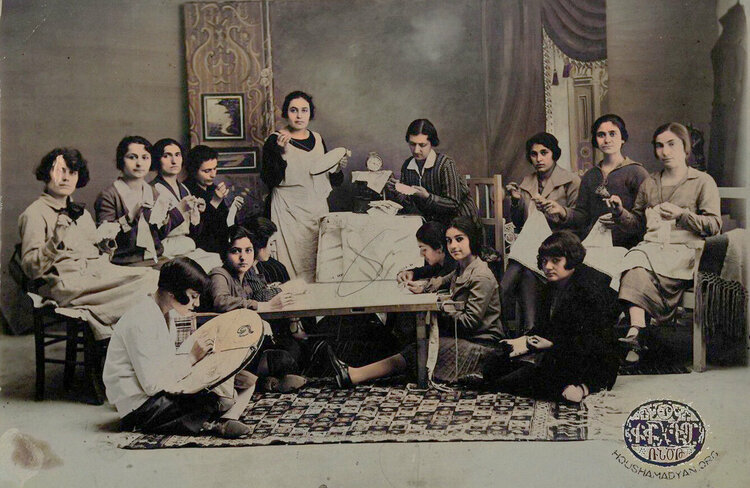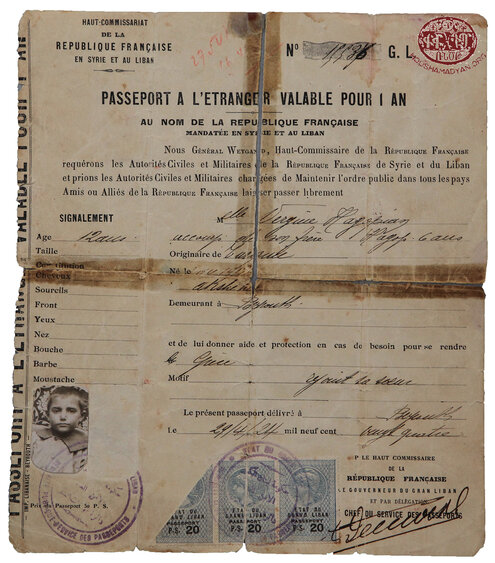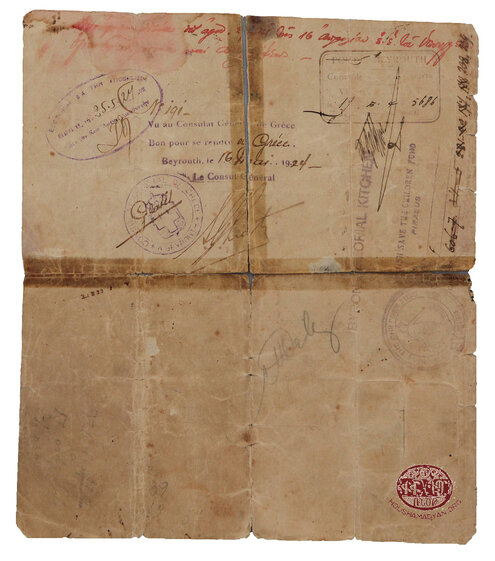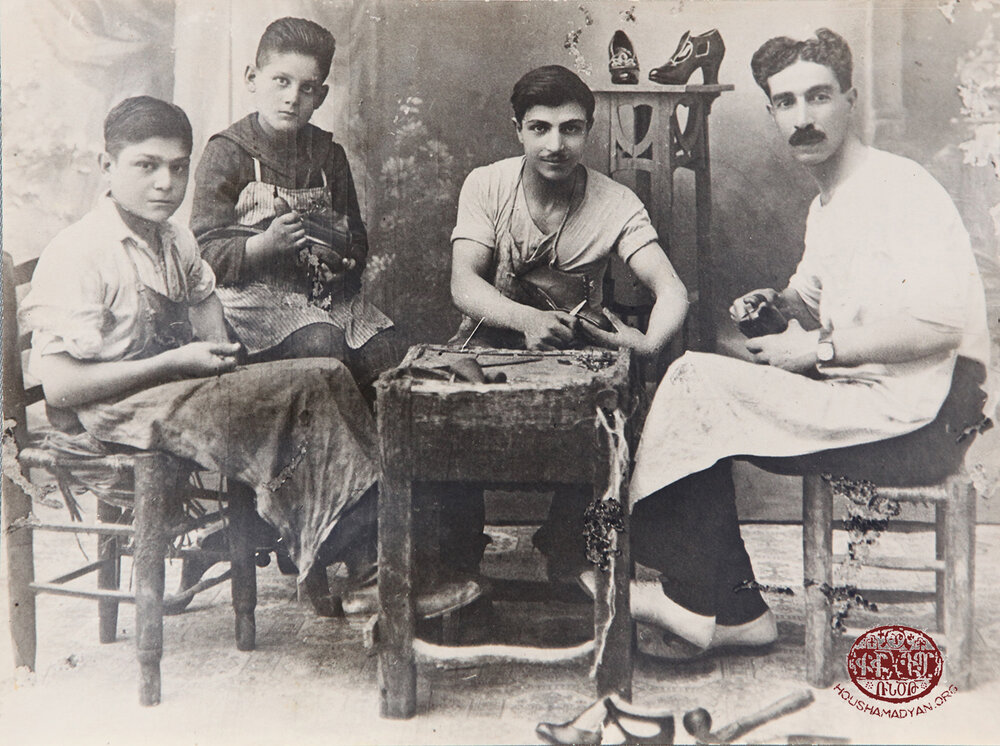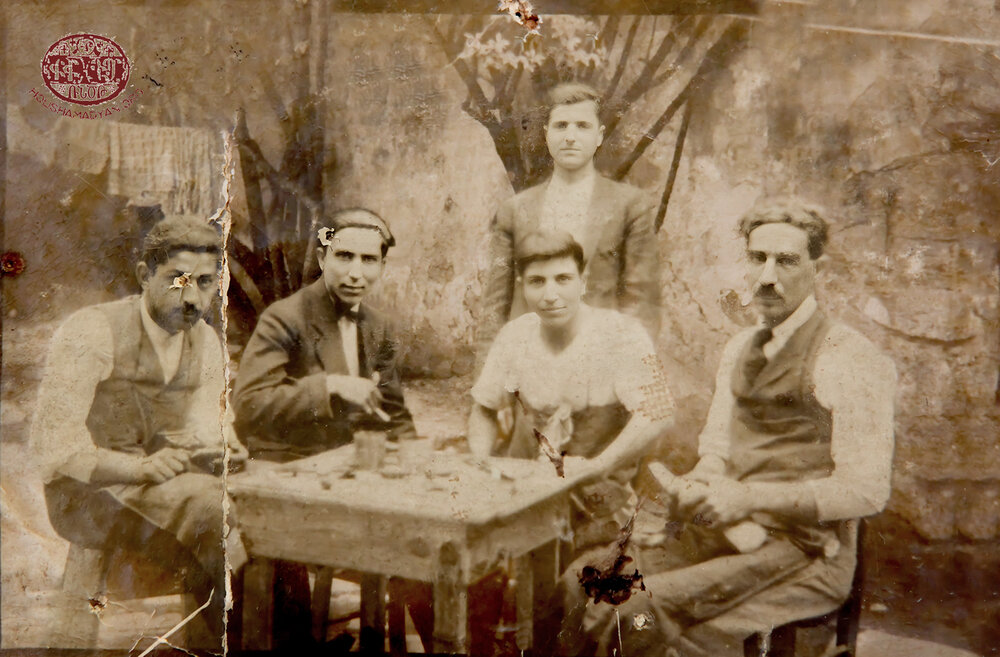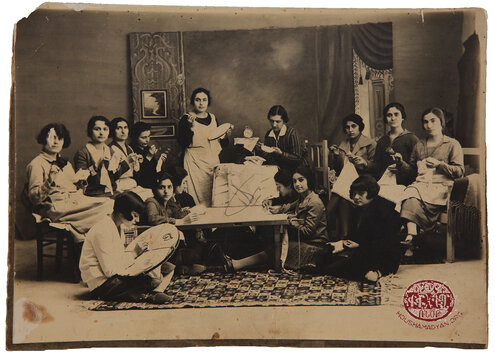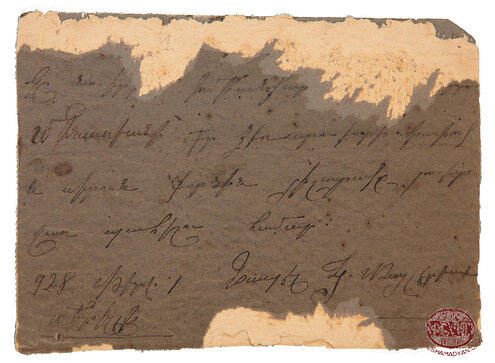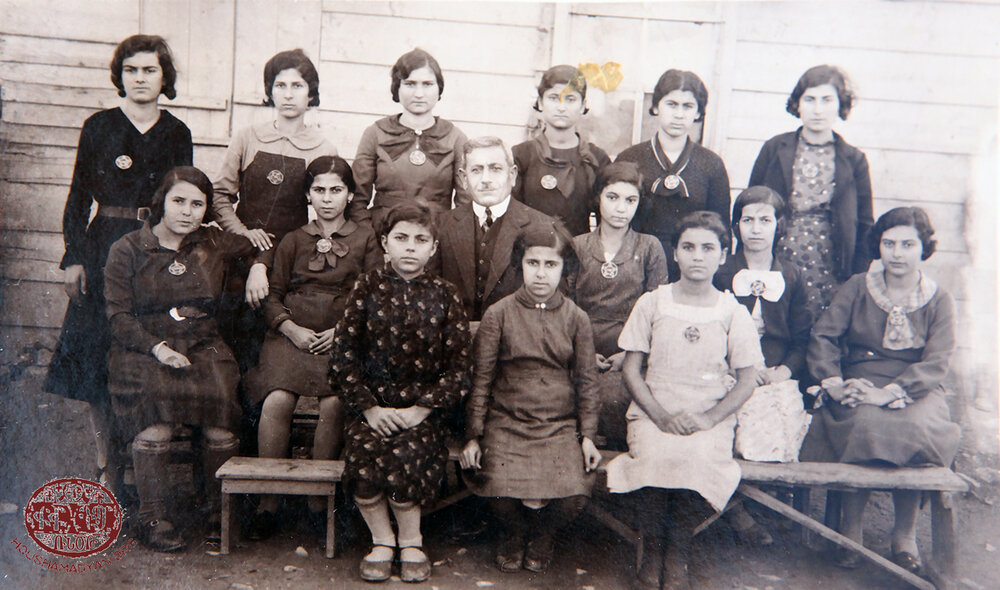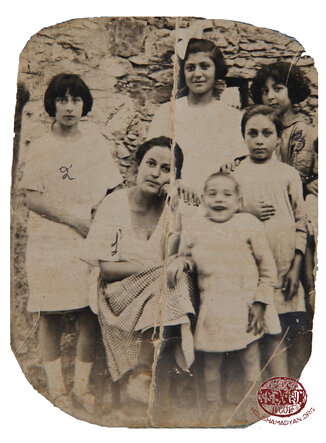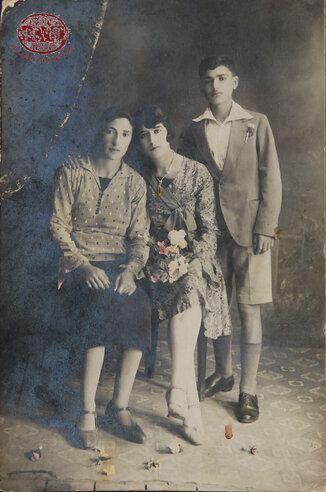Yeghia/Gegia Sarkisian Collection - Athens
Translator: Hrant Gadarigian, 24/05/21 (Last modified 24/05/21)
These items of remembrance were collected during the Houshamadyan workshop held in Athens on November 30, 2019. This page was produced in collaboration with the Athens periodical Armenika and the Hamazkayin Union.

Yeghia Sarkisian's father was Simon Sarkisian, who was born in Smyrna around 1900. Simon's father was also named Yeghia Sarkissian, and we know that he was the director of a railway station.
Yeghia’s mother, Verjin Sarkisian (née Torosian), was born in Akshehir, northwest of Konya. Yeghia doesn’t know much about his mother’s past since she was orphaned after the Genocide and lived for a time in one of the orphanages run by the Near East Relief (NER) charity in Lebanon. Verjin had a brother (Hagop) and a sister (Azniv). We know that Azniv was the first of the three who settled in Greece. Verjin (12 years old) and Hagop (6 years old) left Lebanon in 1924 and joined their sister in Greece. Azniv and Hagop immigrated to Soviet Armenia later in the 1940s.
Verjin's passport, granted her by the French mandate regime in Syria and Lebanon. With it, Verjin (12 years old) and Hagop (6 years old) leave the port of Beirut for Greece to join their sister Azniv. The date of the passport is April 29, 1924. On the back of the passport are the seals of the Greek Consulate in Beirut, the Save the Children organization, and the Beirut port customs department.
Yeghia’s father, Simon, was a shoemaker in Smyrna. He first mastered this craft by working with his master, Khachig Barba, who was the husband of Simon's sister, Roza.
In 1922, when the Turkish armies entered Izmir, Simon was taken prisoner, just like thousands of other adult men. We know that many of these captives would live in exile in Turkey for years to come. Some would die during those years of captivity, and others would only return to Greece years later. Simon’s destiny was different. Shortly after his capture, when Greek and Turkish prisoners of war were to be exchanged, he managed to obtain the identity card of a dead Greek soldier. He introduces himself as this soldier, named Zachariadis, and fortunately is included in the group of Greek soldiers to be exchanged. Thus, in 1923, he reached the Greek island of Zakynthos, where his sister Roza and his family had already settled. Simon's other sister, Nvart Minasian, had taken refuge on the island of Mitilini/Mytilene and lived there with her family.
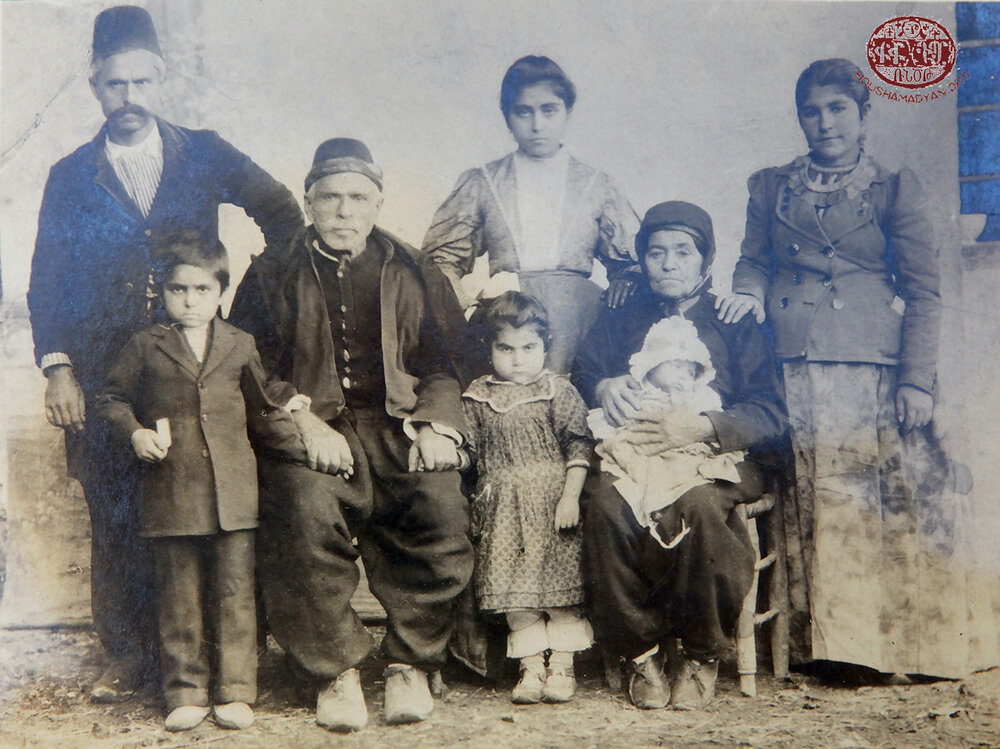
Adana, circa 1905. Khachigian family. This one is the family of Verjin Sarkisian (née Khachigian). She is the wife of Yeghia Sarkisian. The Khachigian family is from Adana. Verjin's mother is Sesede, and the father is Melkon. We were only able to identity the newborn child. She is Verjin's aunt, Lousin.
Mitilini/Mytilene Island. 1928. Handicraft school. The master-teacher is Nvart Minasyan (standing), who is Yeghia Sarkisian’s aunt (Simon's sister). On the back of the picture is written: "I dedicate this group photo to Nvart Minasyan, to keep the memory of our delicate and beautiful artwork forever vibrant. 1928 February 1, Mitilli, Zabel K. Daylerian.”
In Zakynthos, Simon continued his shoemaking, joining his master, Khachig Barba. In the images brought by Yeghia, there are two remarkable photographs that are similar in content, but deep down there is a whole chasm between them, marked by disaster, homelessness and survival.
The first picture was taken probably just before the First World War in Smyrna, Simon Sarkisian's hometown. In it, young Simon appears with his master and brother-in-law, Khachig Barba, in their own workshop. They are smartly dressed, their hair trimmed and tidy. Their shaved faces exude smiles and contentment. Right behind them, on a high table, is a pair of new women's shoes most likely designed and made by them. It is obvious they are proud of their work.
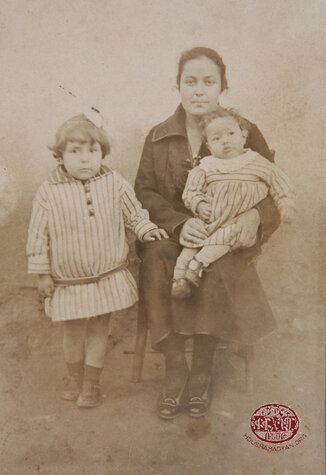
The second image, also showing Simon and Khachig Barba, was taken in 1923 on the island of Zakynthos, where they had taken refuge. They are holding shoes being made. They are still plying their craft, but this time out in the open since they do not have a workshop. This photo, unlike the previous one, portrays a sense of insecurity. These are the first years of exile. In the background, one sees laundry drying on a tree. The contradiction between the two images is obvious. Their tragedy has flung Simon into the arms of uncertainty and poverty. But it seems that they took the second photo with the first one in mind, to show the bitter twist of fate. Perhaps, they also wanted to emphasize here that life goes on. Simon and Khachig are dressed in their holiday best. They are not dressed as craftsmen. They’ve gone out of their way to appear in the best light possible, despite their humble surroundings.
The photos also have a future history. For a long time, Yeghia Sarkisian only had an image taken in the Smyrna workshop as a legacy from his father. Later, in Athens, Yeghia becomes the neighbor of Avedis, who appears in the Zakynthos photo. It was here that Avedis presents Yeghia with a photograph of the craftsmen who had emigrated. In this manner, the two images come together, complementing each other.
After Zakynthos, Simon Sarkissian moved to Athens, where he continued his shoemaking career. It is here that he married Verjin Torosian and start a family.

